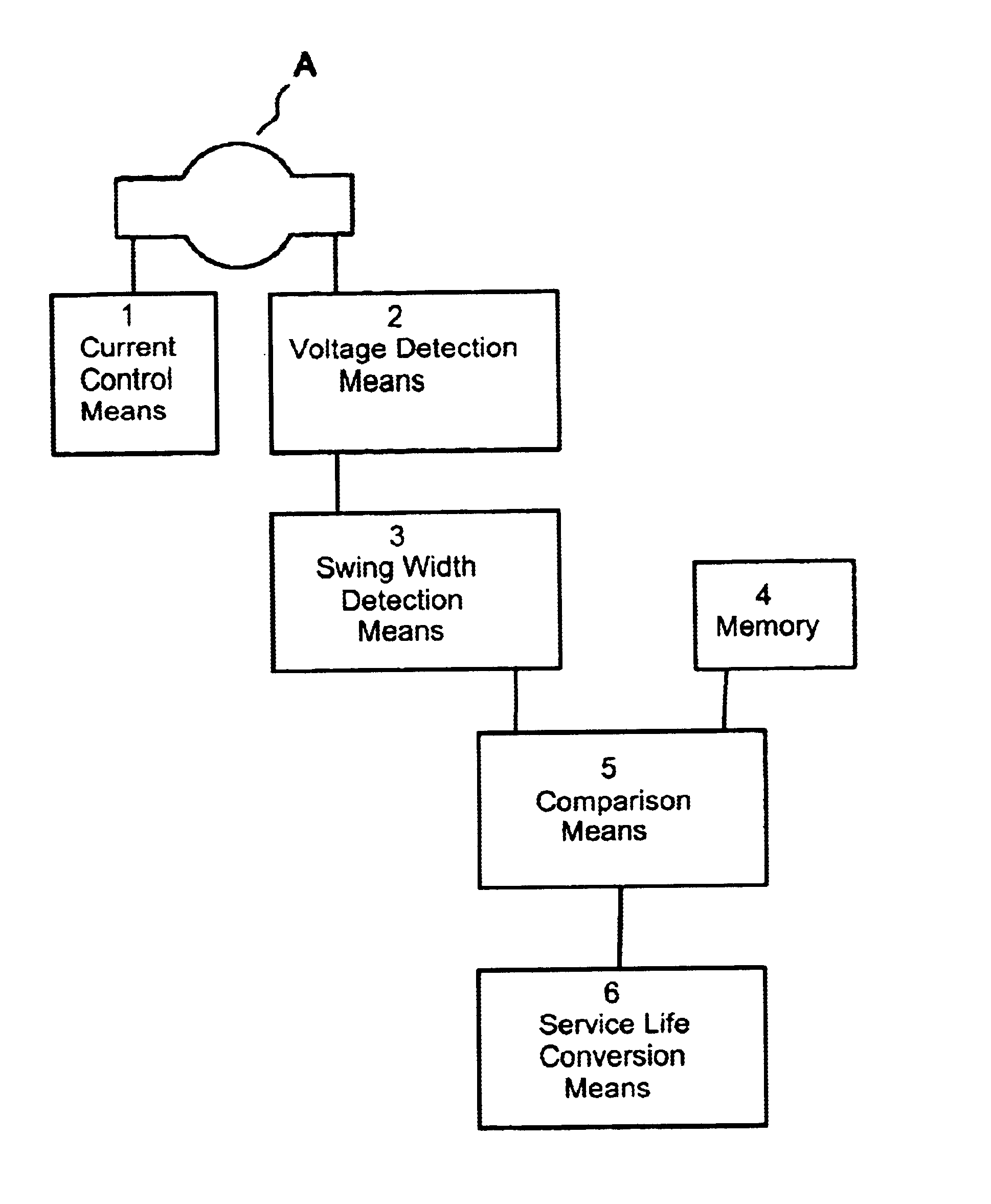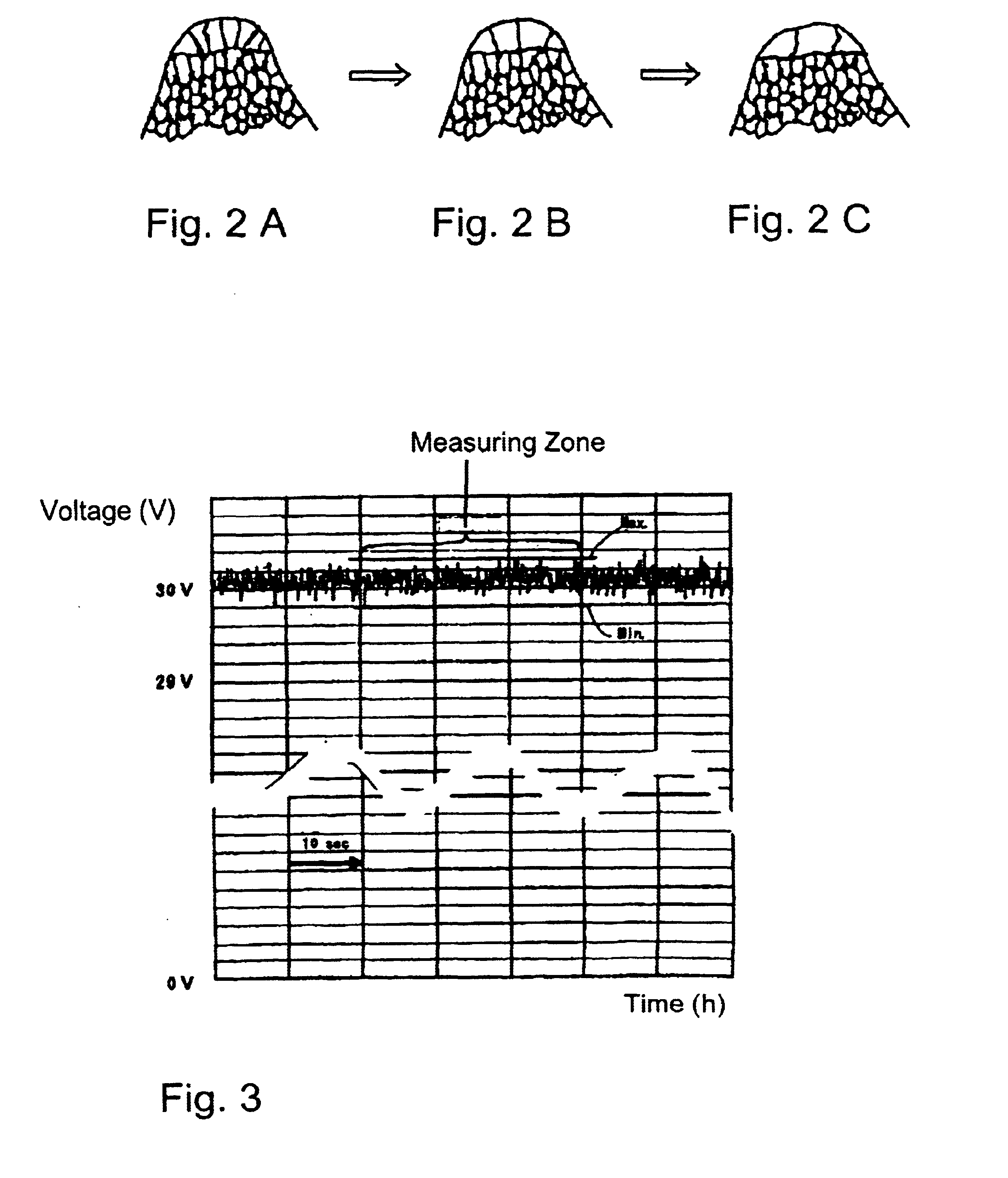Process for anticipating the service life of a rare gas discharge lamp and a system for anticipating the service life of rare gas discharge lamp
a technology for rare gas discharge lamps and service life, which is applied in the field of process the system for anticipating the service life of rare gas discharge lamps. it can solve the problems of flickering in the light, difficult to see the images, and flickering in the image, so as to achieve the effect of reliably anticipating the service li
- Summary
- Abstract
- Description
- Claims
- Application Information
AI Technical Summary
Benefits of technology
Problems solved by technology
Method used
Image
Examples
Embodiment Construction
The process in accordance with the invention for anticipating the lifetime is described below using one embodiment, the lamps 1 and 2 according to FIG. 4 being taken as the example. These lamps are operated with a rated current of 80 A. The value of the swing width of the voltage (magnitude of the voltage fluctuation as indicated above) during operation with the rated current of 80 A is shown using the graphic A of the lamp 1 and the plot B of the lamp 2. Furthermore, the value of the swing width of the voltage during operation with a rated current which has been reduced to 40 A is shown using the graphic a for the lamp 1 and the plot b for the lamp 2. The lifetime of these lamps before occurrence of the flicker phenomenon is defined by the time at which the value of the swing width of the voltage at the rated current exceeds 0.35 V. In the lamp 1, the time of the service life of the lamp before occurrence of flicker is roughly 1000 hours, while 50 hours before, specifically at 950 ...
PUM
 Login to View More
Login to View More Abstract
Description
Claims
Application Information
 Login to View More
Login to View More - R&D
- Intellectual Property
- Life Sciences
- Materials
- Tech Scout
- Unparalleled Data Quality
- Higher Quality Content
- 60% Fewer Hallucinations
Browse by: Latest US Patents, China's latest patents, Technical Efficacy Thesaurus, Application Domain, Technology Topic, Popular Technical Reports.
© 2025 PatSnap. All rights reserved.Legal|Privacy policy|Modern Slavery Act Transparency Statement|Sitemap|About US| Contact US: help@patsnap.com



